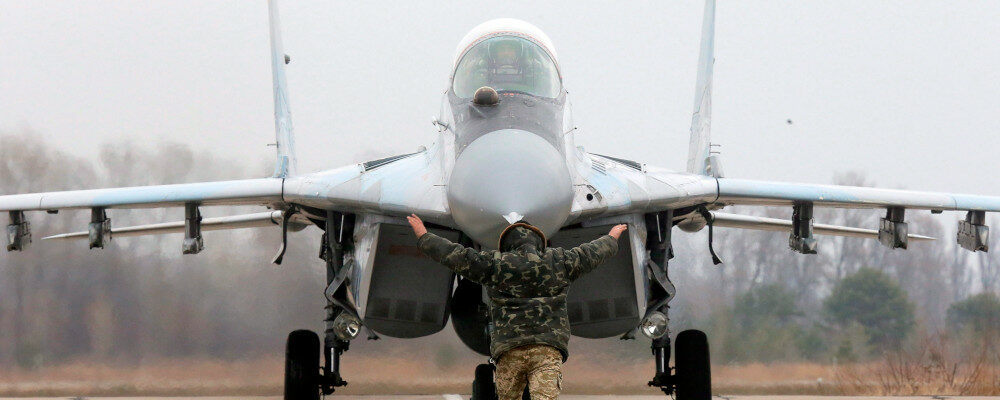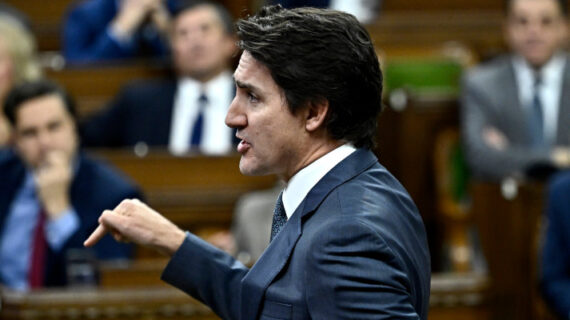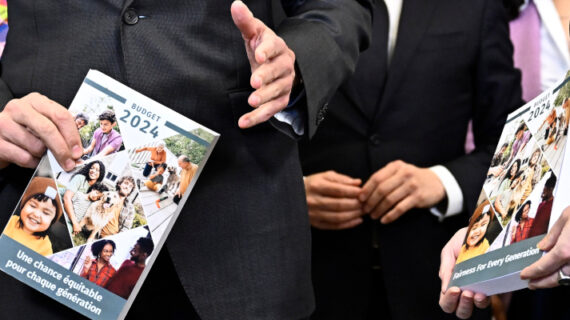Ukraine’s minister of defence claimed in the last few weeks that he expects NATO allies will provide fighter aircraft “as soon as possible.” Unlike the Leopard 2 tanks debate, however, where the supporters of Ukraine were largely united in their support (with the brief exception of Germany until its recent reversal), the debate over fighter aircraft has been much more mixed. Most of Ukraine’s key backers, the United States, Germany, and the United Kingdom are fairly dismissive of the idea in the short term.
To start, the Ukrainian air force has been an important part of the country’s remarkable defence of its territory over the past year—improving its capabilities should be a priority for the Ukrainian government and its backers not just now but also after the war concludes. The reticence behind the Western governments’ decision is a combination of several major factors: the challenges of such a transition, its cost, and its ultimate efficacy.
Fighter aircraft are extremely complex capabilities, among the most difficult to operate and sustain for a modern military. A typical NATO training system requires roughly 18 months of fairly intensive training to produce a combat-ready fighter pilot, albeit with a very basic level of ability. A squadron requires a mix of a few highly experienced veterans with over a decade of experience that can effectively employ new recruits. While there might be a tendency to believe that Ukrainian pilots, many of whom are year-long combat veterans, would easily adapt to new aircraft and play this role, this is not the case.
A key part of the challenge is that NATO and other European fighters operate significantly differently from their former Soviet counterparts. The pilot-vehicle interface is a critical component for any training regime, as pilots often need to make split-second decisions based on muscle memory in order to be effective; as such, unlearning existing habits and relearning new ones is a critical part of an effective transition. Overall, Western aircraft controls operate under different logics and operations—for example, Ukrainian aircraft use Cyrillic and metric symbology and controls.
Existing Ukrainian Air Force pilots would need significant retraining to just achieve a basic level of proficiency, much less one that would allow them to take advantage of NATO fighters’ capabilities. Thus far, the United States and the United Kingdom have only agreed to provide basic flight training to Ukrainian pilots, not the year-long advanced fighter and conversion training required to transition pilots to a specific aircraft type.
While pilots garner much of the popular focus, in reality, the true bottleneck for a transition is the sea of nameless maintenance technicians. Their tireless efforts are critical to keeping any aircraft operating. Each generic Western fighter, like the F-16 or CF-18, requires eight to 10 frontline maintainers to keep an aircraft operating successfully around the clock. They are essential for various subsystems, including avionics, radars, electronic countermeasures, structures, engines, and various weapon types. In total, a fully staffed NATO squadron of 18 aircraft requires 20 or so pilots, and approximately 300 maintainers and other staff members.
Moreover, these individuals are almost certainly at a high premium within the Ukrainian armed forces, considering the wide variety of Western armoured vehicles they currently employ in the field. There simply isn’t a reserve of underemployed technicians sitting idly by waiting for work. This means a large number would need to be trained afresh, which in some cases could be a years-long process.
Part of the issue is that Ukraine is at war, which complicates any assistance. Traditional models of transitioning an airforce to a Western type are not available. Typically, contractor support is deeply embedded in new users of Western fighters in order to build up the necessary expertise until it is no longer necessary. However, this approach is politically and militarily problematic when the entire country is in the midst of fighting a war.
Thus, most firms would be extremely reticent in providing such support in the country. An alternative is to operate a two-level model, with the frontline squadron work undertaken at airbases in Ukraine and more complex work provided inside NATO countries. This too would be politically problematic, as these new fighters would be using bases in NATO countries as sanctuaries of sorts. While many Ukrainian capabilities utilize this two-level model, such as armoured vehicles, it would be much more visible and problematic having these aircraft crossing regularly back and forth for maintenance work.
While a common refrain is that wartime necessity and expediency should trump safety, this is a problematic argument due to the resources required to operate a NATO standard fighter fleet. Each fighter, even a type that has been declared surplus, is costly to operate, and older airframes require more work to keep flying than new ones. This would add to the significant maintenance burden faced by Ukrainian forces. The resources required to sustain a single fighter could support multiple armoured vehicles, yet there is no guarantee that the former can be a decisive instrument.
For Ukraine to win, it must be efficient with the resources it has and find avenues to make highly advantageous exchanges. That does not mean replicating the entire panoply Western capabilities in miniature, no matter the cost. Russia still possesses a highly potent air defence system that has denied their airspace to Ukrainian combat aircraft—even NATO Air Forces would face significant difficulty overcoming their capabilities. A Ukrainian Air force operating older Western aircraft with hastily trained personnel will be at an even greater disadvantage.

Instead, Ukraine has already adapted to this reality, much along the lines of cutting-edge U.S. and NATO doctrine. Since the promulgation of the U.S. Army and Marine Corps’ multi-domain battle concept in 2017, Western militaries have increasingly moved towards achieving airpower’s battlefield effects using non-traditional means. As air superiority could not be assured against new Chinese and Russian air defence capabilities, the United States sought alternative approaches, like long-range artillery and surface-to-surface missiles to conduct strikes.
Ukraine already illustrates this approach. With the use of a persistent battlefield intelligence collection system, provided by Western or Ukrainian capabilities, it has effectively employed those very same long-range strike capabilities, most notably the HIMARS rocket system, to achieve similar effects to what air superiority would provide. A better approach would be to reinforce these capabilities, including the provision of the much-longer range ATACMS system.
In addition, Ukraine’s allies should try to improve the capability and serviceability of its current fighter fleet for the immediate future. Of particular note is the incorporation of a number of specialized NATO systems into the Ukrainian fighter fleet, like the High-Speed Anti-Radiation Missile. Integrating other precision-guided, stand-off weapons, such as the Small Diameter Bomb, Standoff Land Attack Missile, or Joint Stand-off Weapon, would be immensely helpful in improving their existing aircraft’s ability to play a more substantial role in the conflict, without creating a capability gap that a transition would entail
Airpower is a critical component of any modern war, and Ukraine has illustrated that. However, its application must be carefully calibrated to the resources and opportunities available. Undoubtedly the Ukrainian military will eventually transition to NATO standard fighters, much like other former Warsaw Pact countries have. Kyiv’s effort may well be aimed at that objective, preparing its air force for what comes after the immediate war with Russia. Nevertheless, the West should focus on tangible improvements that will improve its current fighting capability, and then start a transition after the conflict is over. The risk of attempting such a transition at present is far too high and could have deleterious consequences for its ability to succeed against Russia.




